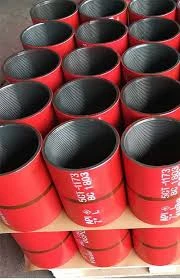- Afrikaans
- Albanian
- Amharic
- Arabic
- Armenian
- Azerbaijani
- Basque
- Belarusian
- Bengali
- Bosnian
- Bulgarian
- Catalan
- Cebuano
- Corsican
- Croatian
- Czech
- Danish
- Dutch
- English
- Esperanto
- Estonian
- Finnish
- French
- Frisian
- Galician
- Georgian
- German
- Greek
- Gujarati
- Haitian Creole
- hausa
- hawaiian
- Hebrew
- Hindi
- Miao
- Hungarian
- Icelandic
- igbo
- Indonesian
- irish
- Italian
- Japanese
- Javanese
- Kannada
- kazakh
- Khmer
- Rwandese
- Korean
- Kurdish
- Kyrgyz
- Lao
- Latin
- Latvian
- Lithuanian
- Luxembourgish
- Macedonian
- Malgashi
- Malay
- Malayalam
- Maltese
- Maori
- Marathi
- Mongolian
- Myanmar
- Nepali
- Norwegian
- Norwegian
- Occitan
- Pashto
- Persian
- Polish
- Portuguese
- Punjabi
- Romanian
- Russian
- Samoan
- Scottish Gaelic
- Serbian
- Sesotho
- Shona
- Sindhi
- Sinhala
- Slovak
- Slovenian
- Somali
- Spanish
- Sundanese
- Swahili
- Swedish
- Tagalog
- Tajik
- Tamil
- Tatar
- Telugu
- Thai
- Turkish
- Turkmen
- Ukrainian
- Urdu
- Uighur
- Uzbek
- Vietnamese
- Welsh
- Bantu
- Yiddish
- Yoruba
- Zulu
pump seating nipple
Understanding Pump Seating Nipples A Key Component in Downhole Equipment
In the world of petroleum and natural gas extraction, the efficiency and reliability of downhole equipment can significantly influence production rates and operational costs. Among the various components used in downhole applications, pump seating nipples play a crucial role. This article delves into the significance of pump seating nipples, their functions, types, and considerations for effective usage in the field.
What is a Pump Seating Nipple?
A pump seating nipple is a specialized component designed to provide a secure connection point for downhole pumps, such as rod pumps or electric submersible pumps (ESPs). Positioned within the tubing string, the seating nipple serves as the anchoring point for the pump, facilitating its installation and operation. The functionality of the seating nipple is vital, as it holds the pump in place, ensuring proper sealing and preventing fluid leakage during extraction processes.
Functions and Importance
1. Secure Support One of the primary functions of the pump seating nipple is to offer stable support for the pump. It allows the pump to function efficiently without experiencing excessive vibrations or dislocations that could lead to mechanical failures.
2. Fluid Control The design of pump seating nipples includes features that help manage the flow of fluids in the system. By providing a tight seal, they prevent unwanted backflow and ensure that fluids can be effectively drawn from the reservoir.
3. Ease of Maintenance Pump seating nipples are often designed for easy access, which simplifies the process of removing and replacing pumps during routine maintenance or upgrades. This ease of maintenance can significantly reduce downtime and related costs.
4. Compatibility and Versatility These nipples are compatible with various pump types and sizes, making them a versatile choice for different downhole applications. Depending on specific operational needs, operators can select the appropriate seating nipple tailored for their equipment.
Types of Pump Seating Nipples
There are several types of pump seating nipples, including
pump seating nipple

- Standard Threaded Nipples These common types have threads that enable easy installation and removal from the tubing string. They are often used in conventional pumping systems.
- Locking Nipples Designed for additional safety, locking nipples incorporate mechanisms that securely hold the pump in place. This design is particularly useful in environments prone to mechanical shifts or vibrations.
- Retrievable Nipples These allow for the extraction of the pump without having to remove the entire tubing string. Retrievable nipples are ideal for operations where frequent intervention is required, thereby enhancing operational efficiency.
Considerations for Usage
When selecting and utilizing pump seating nipples, several factors should be taken into account
- Material Selection The materials used in the construction of the nipple must withstand the specific conditions of the downhole environment, including temperature, pressure, and corrosive fluids. Stainless steel and specialized alloys are common choices for enhanced durability.
- Design Specifications Operators should consider the specifications of the pump and ensure that the seating nipple is designed to accommodate its size and operational parameters. Misalignment can lead to inefficiencies and mechanical failure.
- Installation Practices Proper installation is critical to the performance of pump seating nipples. Adhering to best practices during installation ensures that the nipple functions as intended and reduces the risk of complications in the future.
Conclusion
Pump seating nipples are integral components in the realm of oil and gas extraction, providing critical support for downhole pumps. Understanding their functionalities, types, and optimal usage can enhance operational efficiency, reduce downtime, and improve overall productivity. As technology advances and the demands of the energy sector evolve, the importance of reliable and effective downhole equipment components like pump seating nipples will only continue to grow. Ensuring proper selection and management of these components is essential for successful extraction operations in a competitive market.
-
Tubing Pup Joints: Essential Components for Oil and Gas OperationsNewsJul.10,2025
-
Pup Joints: Essential Components for Reliable Drilling OperationsNewsJul.10,2025
-
Pipe Couplings: Connecting Your World EfficientlyNewsJul.10,2025
-
Mastering Oilfield Operations with Quality Tubing and CasingNewsJul.10,2025
-
High-Quality Casing Couplings for Every NeedNewsJul.10,2025
-
Boost Your Drilling Efficiency with Premium Crossover Tools & Seating NipplesNewsJul.10,2025







